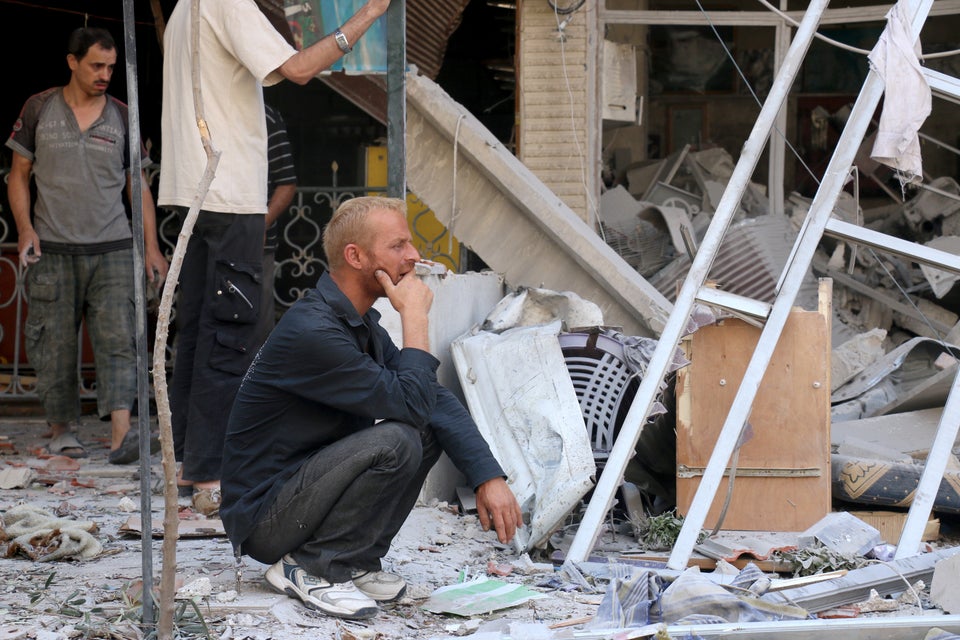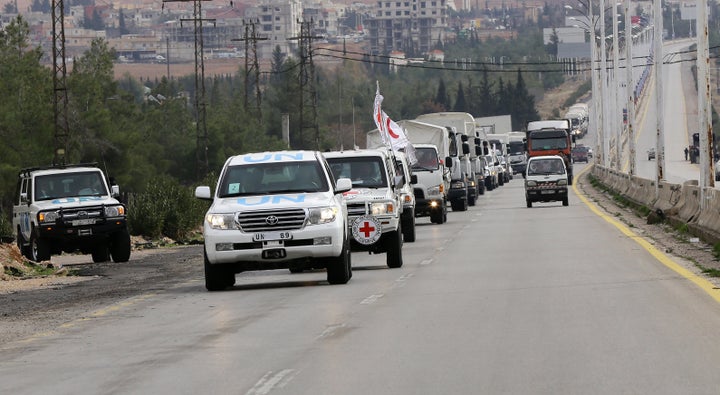
DAMASCUS, Jan 11 (Reuters) - An aid convoy headed for a besieged Syrian town on Monday where thousands are trapped and the United Nations says people are reported to have died of starvation.
Dozens of trucks bearing the Red Crescent logo and carrying food and medical supplies left Damascus for Madaya near the Lebanese border as part of an agreement between warring sides.
Another convoy was en route to two Shi'ite villages, al Foua and Kefraya in the northwestern province of Idlib 300 km (200 miles) away, the Red Cross said on its Syria Twitter account. Under the agreement, aid was to enter Madaya and the two villages simultaneously.
Madaya is besieged by pro-Syrian government forces, while the two villages in Idlib province are encircled by rebels fighting the Syrian government.
The blockade of Madaya has become a focal issue for Syrian opposition leaders, who told a U.N. envoy last week they would not take part in talks with the government, slated for later this month, until it and other sieges are lifted.
The United Nations said on Thursday the Syrian government had agreed to allow access to Madaya, where U.N. officials say there have been credible reports of people dying of starvation.
The Syrian Observatory for Human Rights, which tracks the war, puts the toll at 10, while opposition activists say it is in the dozens. Reuters could not independently confirm the reports.
One opposition activist has said people were eating leaves and plants.
The Madaya blockade began six months ago when the Syrian army and its Lebanese ally, Hezbollah, started a campaign to reestablish President Bashar al-Assad's control over areas along the Syrian-Lebanese border.
Hezbollah has, in response to accusations it was starving people in Madaya, denied there had been any deaths in the town, and accused rebel leaders of preventing people from leaving.
The group's Al Manar television showed footage on Monday of hundreds of Madaya residents gathered outdoors waiting to receive aid.
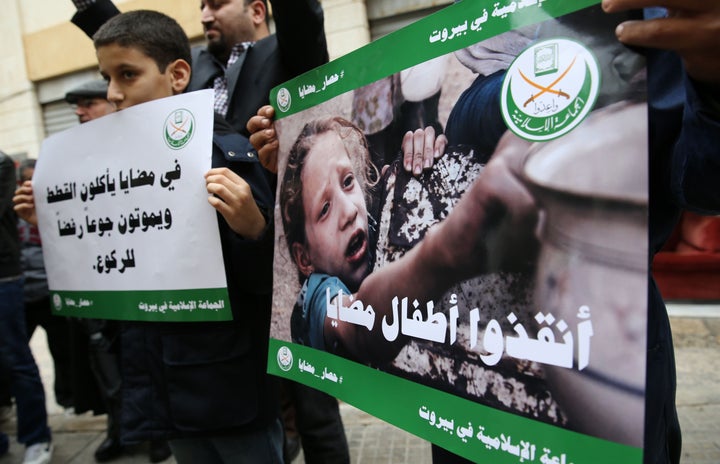
SIEGE WARFARE
Blockades have been a common feature of the nearly five-year-old war that has killed 250,000 people. Government forces have besieged rebel-held areas near Damascus for several years and more recently rebel groups have blockaded loyalist areas including al Foua and Kefraya.
The areas included in the latest agreement were all part of a local ceasefire deal agreed in September, but implementation has been halting, with some fighting around Madaya despite the truce.
Each side is looking to exert pressure on the other by restricting entry of humanitarian aid, or evacuations, in the different areas of control, the Syrian Observatory for Human Rights says.
Aid agencies were hoping for easier access to the area following the ceasefire deal concluded under U.N. supervision.
The last aid delivery to Madaya, which took place in October, was synchronized with a similar delivery to the two villages.
Aid agencies have warned of widespread starvation in Madaya, where 40,000 people are at risk.
Hezbollah has said rebels in the town had taken control of aid which they were selling to those who could buy. The people of Madaya were being exploited in a propaganda campaign, it said.
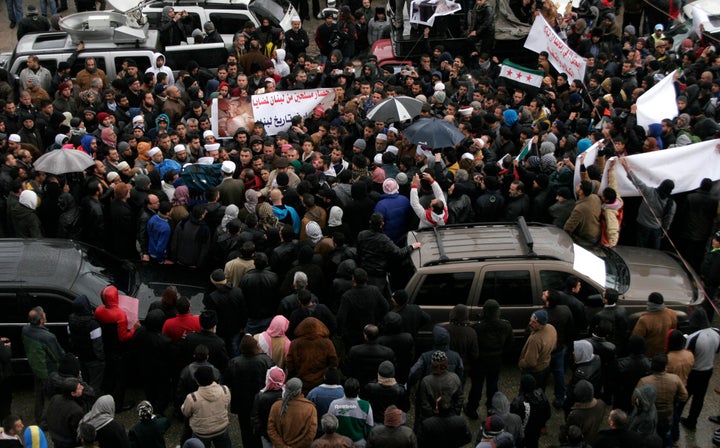
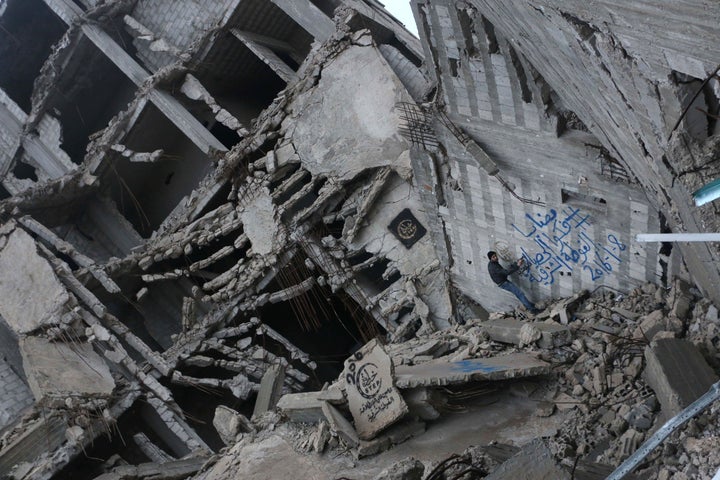
A U.N. commission of inquiry has said siege warfare has been used "in a ruthlessly coordinated and planned manner" in Syria, with the aim of "forcing a population, collectively, to surrender or suffer starvation."
One siege is by the Islamic State group, on government-held areas of the city of Deir al-Zor.
A U.N. Security Council adopted on Dec. 18 setting out a road map for peace talks calls on the parties to allow aid agencies unhindered access throughout Syria, particularly in besieged and hard-to-reach areas.
A newly formed opposition council set up to oversee negotiations has told U.N. envoy Staffan de Mistura that this must happen before the talks he plans to hold on Jan. 25.
They also told him that before negotiations, Assad's government, which has military support from Russia and Iran, must halt the bombardment of civilian areas and barrel bombing, and release detainees in line with the resolution.
(Additional reporting by John Davison and Lisa Barrington in Beirut; Editing by Hugh Lawson and Giles Elgood)
Also on HuffPost:

